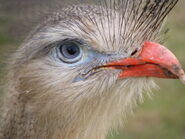| Passerae | |
|---|---|

| |
| Lanner Falcon | |
| Scientific classification | |
| Kingdom: | Animalia |
| Phylum: | Chordata |
| Clade: | Ornithurae |
| Class: | Aves |
| Infraclass: | Neognathae |
| Superorder: | Neoaves |
| Infradiviso: | Passerae |
Passerae is a infradivision of birds that includes higher land birds, birds of prey, near-passerines and perching birds. This infradivision has more species of birds than the others, including the passerines, having more than half the world's birds.[1]
The name "Passerae" is derived from Passer domesticus, the scientific name of the eponymous species (the House Sparrow) and ultimately from the Latin term passer for Passer sparrows and similar small birds.
Anatomy[]
Many of the members have anisodactyl ("perching") feet and zygodactyl feet.[2] Trogons have heterodactyl, found in no other birds[3] while Bucerotiformes and Coraciiformes have syndactyl toes.[2] Mousebirds have pamprodactyl feet, also found in swifts - the outer toe is reversible.[2]
A photo of a hawk's eye.
In Accipitriformes, Falconiformes and Psittaciformes, the bill is sharply hooked.[3]
Woodpeckers have sharp bills and very long tongues that are used to extract insects from underneath the bark; while their relatives, the barbets, have bills that are stout with a fringe of bristles at the base, are used to eat fruit.[3]
The bills of Passeriformes varies, from large and broad, as in broadbills[3]; decurved, as in some asities[3]; short, as in manakins; large and powerful, such as nuthatches[3]; long and thin, as in treecreepers; thick, as in estrildid finches[3], and so on.
Even the Fringillidae's bills are varied, the Hawfinch has a strong beak and cheek muscles that are capable of splitting hard tree seeds; the European Goldfinch has as cone-shaped bill which is ideal for eating most small seeds and the crossbills have bills adapted to split open spruce and pine cones.[3]
Taxonomy[]
Accipitrimorphae includes: New World vultures; secretarybird, osprey, Accipitridae[4];
Anomologonatae includes: mousebirds; true owls and barn-owls; cuckoo roller; trogons; hornbills, ground hornbills, hoopoes and woodhoopoes; rollers, bee-eaters, kingfishers, ground rollers, todies, and motmots[5]; and toucans, Asian barbets, American barbets, African barbets, toucan-barbets, honeyguides, woodpeckers, flickers, wrynecks, piculets, jacamars, puffbirds, nunbirds and nunlets[6] as well as the made-up order of birds, highnoses[made-up or.];
Passerimorphae includes: seriemas, falcons, parrots and passerines.[7][8]
Gallery[]
References[]
- ^ Ernst Mayr, "The Number of Species of Birds", The Auk, Volume 63, Number 1 (January, 1946), p.67
- ^ a b c Terres, John K. (1980). The Audubon Society Encyclopedia of North American Birds. Alfred A. Knopf, Inc. ISBN 0394466519.
- ^ a b c d e f g h Frances, Peter; et al. (2007). Bird: The Definitive Visual Guide. Dorling Kindersley Inc. ISBN 1564582957.
- ^ John H. Boyd III (January 26, 2012). "ACCIPITRIMORPHAE: Cathartiformes, Accipitriformes". TiF Checklist. Retrieved 19-04-2024. Check date values in:
|access-date=(help) - ^ John H. Boyd III (October 15, 2011). "ANOMALOGONATES I: Coliiformes, Strigiformes, Leptosomiformes, Trogoniformes, Bucerotiformes, Coraciiformes". TiF Checklist. Retrieved 19-04-2024. Check date values in:
|access-date=(help) - ^ John H. Boyd III (January 5, 2012). "ANOMALOGONATES II: Piciformes". TiF Checklist. Retrieved 19-04-2024. Check date values in:
|access-date=(help) - ^ John H. Boyd III (January 8, 2012). "FALCONIFORMES & PSITTACIFORMES". TiF Checklist. Retrieved 19-04-2024. Check date values in:
|access-date=(help) - ^ John H. Boyd III (February 24, 2015). "Australaves: Tree View". TiF Checklist. Retrieved 19-04-2024. Check date values in:
|access-date=(help)
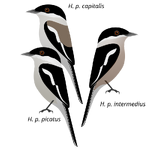
|
This article is part of Project Bird Taxonomy, a All Birds project that aims to write comprehensive articles on every order, family and other taxonomic rank related to birds. |




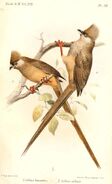


















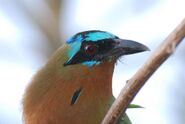




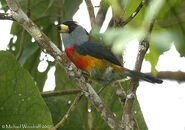




![Robert's Highnose3.png (120 KB) Altirhiformes[made-up or.]: Altirhinidae[made-up fam.]](https://static.wikia.nocookie.net/allbirdsoftheworld/images/4/4d/Robert%27s_Highnose3.png/revision/latest/scale-to-width-down/185?cb=20120404191021)
